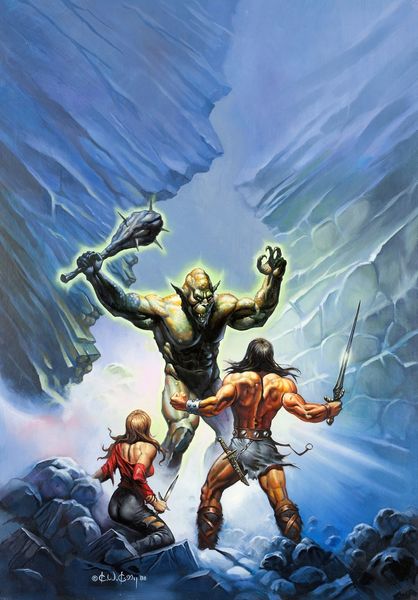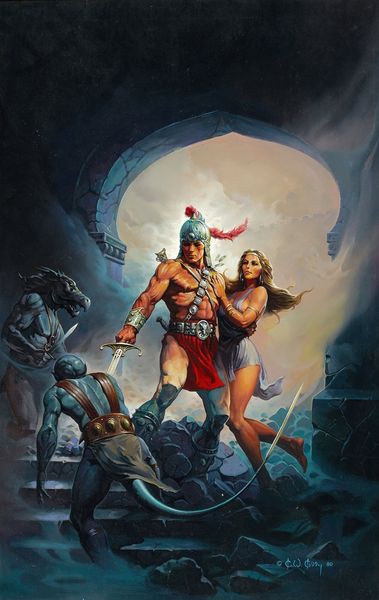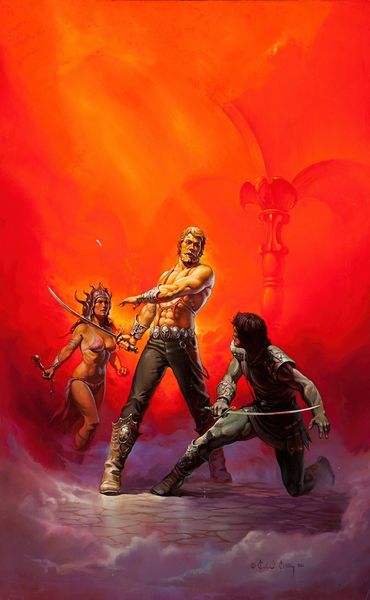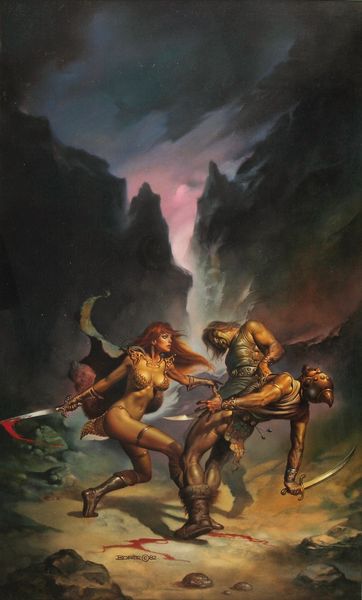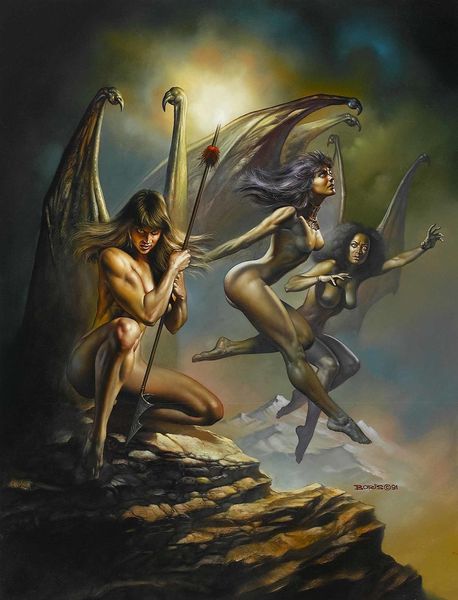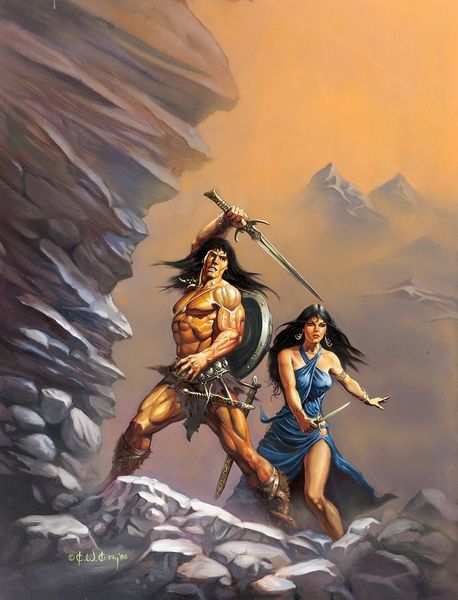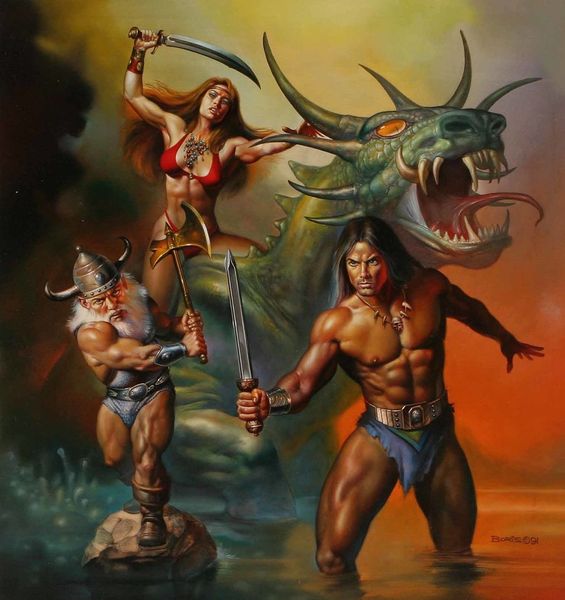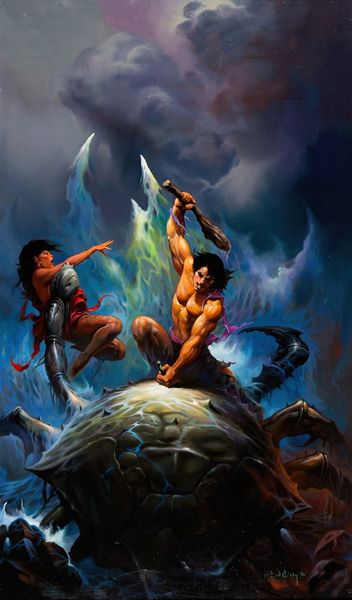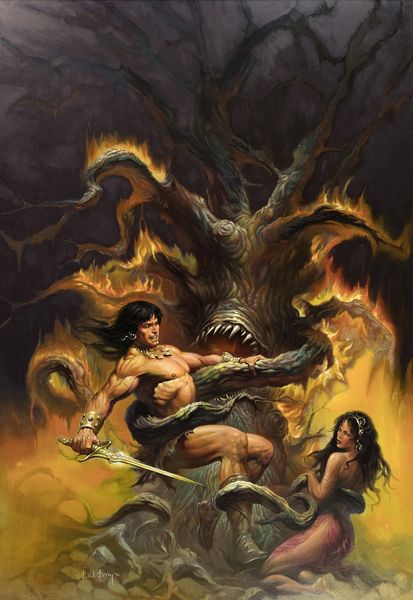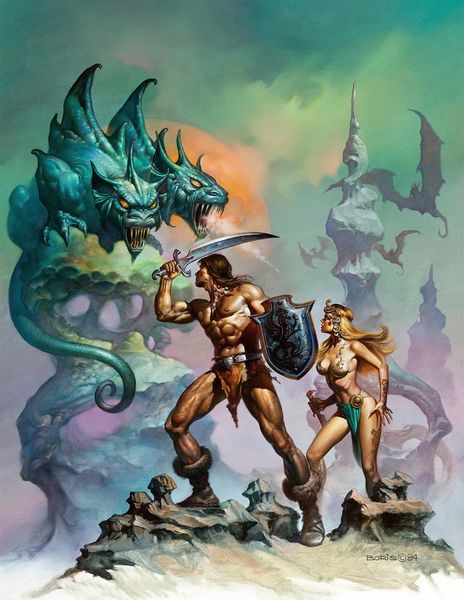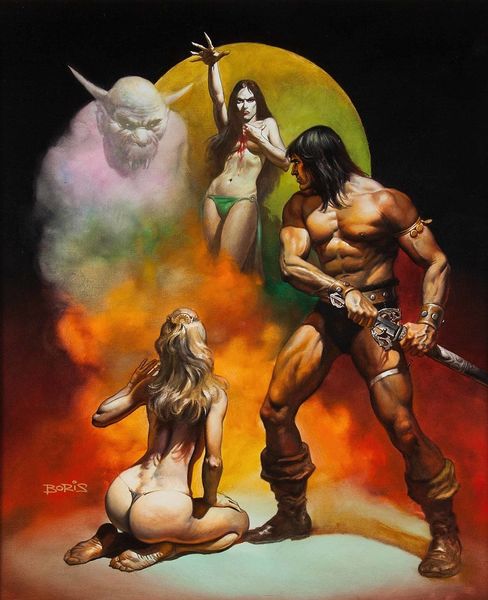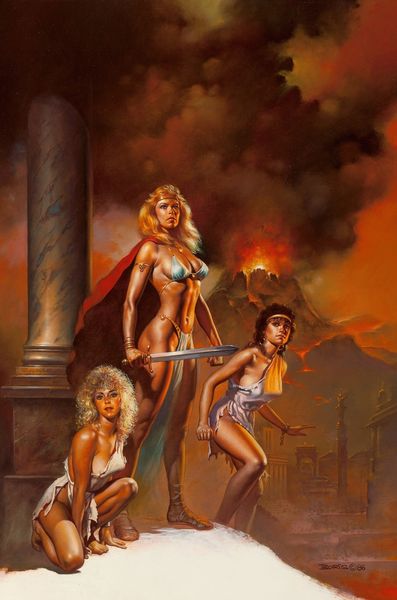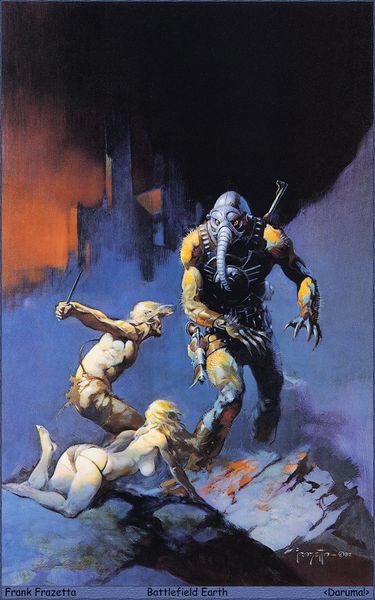
Copyright: Modern Artists: Artvee
Curator: Ah, here we have "The Warrior Rearmed Paperback Novel Cover" painted by Ken Kelly, likely around 1984, if the signature in the corner is any indication. Quite striking for what was, in essence, commercial work. Editor: My first impression is just pure… drama. That bright light emanating from the central sword just cuts through the somewhat murky cave setting. It feels ripped straight out of a teenage fantasy novel, in the best way. Curator: The book cover does partake in very popular thematics in fiction and, moreover, it’s impossible to separate this imagery from specific economic conditions of art and its commercial consumption, isn't it? This represents fantasy art that appeals specifically to those with material culture of neo-expressionist books, and this affects production through artist commodification. The materiality itself contributes greatly; painting on the level of representation has the figuration that the popular consumers desire for purchase. Editor: True, and from a more instinctive perspective, that commodification you mention almost elevates it, don't you think? The airbrushed sheen, those improbable muscles – they’re larger than life, literally. Plus, Ken Kelly really understands the romantic draw of the "heroic nude," doesn't he? The warrior figure, contrasted with the somewhat tentative female, creates a dynamic tension… though perhaps not a subtle one. Curator: Well, think about how the artist created this hypermasculine figure; you would want this hero in your neo-expressionist book for validation, since consumption influences painting production. It makes use of archetypes, yet also reifies these ideals in line with mass tastes. The choice of oil paint itself links the image to classical notions, even while this book jacket democratizes, mass-produces, those ideas of painting through paperback novel covers. Editor: I agree on how painting choices provide traditional artistic and expressive sensibility, even within popular and fantasy subject matters. But even looking at her expression – there’s almost a sense of foreboding there, don't you see? What about the narrative it tells, and is it a heroic journey with erotic adventure? A lot more is shown within, but also, that the artist must use this neo-expressionist fantasy art to appease consumption requirements by making the hero as they seem, large and courageous. Curator: Right, yet even then, production still impacts how these figures end up on shelves: the style of the surreal setting, the themes used by painting with the narrative that is expressed; are all factors that would lead consumers to mass purchase. Editor: Absolutely! Thanks to it, "The Warrior Rearmed" lingers in the memory more as mythic imagery that you would expect. Curator: And how the conditions and mode of artwork production influence consumption!
Comments
No comments
Be the first to comment and join the conversation on the ultimate creative platform.
